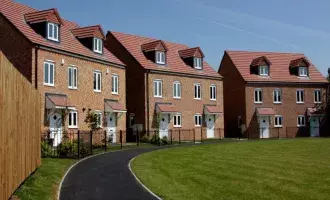There’s no question that the Coronavirus pandemic has hit councils across the UK hard, with a combination of residents needing more help and the mechanisms for delivering that help being disrupted.
In fact, some local authorities have been affected so badly that they’ve warned that they could go bankrupt without extra Government help.
But now that we’re starting to see a glimpse of recovery, it’s also clear that the post-pandemic world offers opportunities as well as challenges and risks, and many councils are evaluating the pandemic’s impact on their communities and responding to it quickly and positively.
Take planning, for example. Before the pandemic took hold, on 12th March the Government set out its plans for housing in “Planning for the Future”, including setting a deadline of December 2023 for local authorities to ensure their local plans were up to date, forcing about 80% of planning authorities to review or replace their existing plans.
Further details are eagerly awaited in the forthcoming Planning White Paper which “offers creative solutions to establish a planning system that works for the next century”. It is clear that the pandemic has added extra risks to that reform process, such as the ability to make it transparent and the impact of the global economic fallout.
However, there is also a great opportunity for councils to put themselves at the heart of the recovery. At a recent webinar, we showcased two that are doing just that – Hambleton District Council, a large rural district in North Yorkshire and Barnet Council, an outer London borough – and a way to harness the power of technology to engage more people with local planning decisions.
Hosted by Neeru Kareer, Assistant Director of Planning and Building Control at Re Ltd, the webinar featured Jon Berry, Hambleton DC’s Chief Planning Officer, and Oliver Hudson, Associate Director at Built-ID.
Jon demonstrated how councils can “progress a local plan in a really positive manner”, despite the restrictions imposed by the pandemic, explaining how Hambleton DC met the initial deadline for submitting its local plan to the Planning Inspectorate for examination, eight days after the UK went into lockdown in March 2020, and then provided inspectors with extra information about 11 different areas of its plan, ranging from how the council engages with other prescribed bodies, such as Natural England, and how that affects its policies to how its key settlements should grow following the pandemic.
Officers from outside the planning team have worked with local businesses to develop a business case “to demonstrate that the development we are putting forward in our allocations is going to be viable and deliverable”.
“Covid-19 hasn’t made it easy but we’ve carried on and we’ve made really good progress,” he concluded. Oliver outlined a tool that enables councils to take a digital-first approach to getting community engagement with the planning process, enabling a diverse range of views and opinions to be heard about plans for development.
He highlighted a challenge that had existed before the pandemic – how do councils ensure that they’re hearing from citizens and embedding that insight into their decision making – but that had been amplified by the lockdown and the need to socially distance. The question now was how councils could use digital tools to connect with a much wider, more representative audience than would have traditionally attended the in-person meetings and events that they were used to running.
Built-ID’s Give My View digital platform combines interactive polling software with targeted marketing campaigns, to bring communities and decision makers together. Since its launch in April 2019, Oliver said, it had been used by more than 200,000 people of all ages, it had elicited 10,000 responses per project, and it had increased engagement levels by 1,900% on traditional in-person events.
The platform brings together four pieces of engagement, giving citizens key information about timelines, consultation boards, news articles and FAQs plus the chance to give their views via “vibrant, fun, engaging” polls. It’s supported by marketing and outreach campaigns that drive relevant audiences to the polls, including paid social media advertising.
Oliver said the keys to success were to make it easy for people to engage, go out and get them rather than waiting for them to come to you, make the user journey as frictionless as possible, and incentivise people to take part by allowing them to have a positive impact on their communities immediately as well as in the long term.
“Covid-19 presents an opportunity now for local authorities to explore a digital-first approach to engagement and really look to use tools to connect with a much wider audience,” he added.
Neeru turned the spotlight on “entrepreneurial” Barnet Council – the biggest borough in London, with a population of 40,000 and 30 high streets and town centres – and its plans for growth and recovery following the pandemic.
The new Barnet Local Plan 2036 focuses on developing the borough’s town centres, public transport hubs and key corridors. “The next decade of delivery will be a borough-wide approach in order to meet not only our growth aspirations but also to deliver the greatest benefits,” she said. “We have to broaden our spatial approach to take advantage of emerging development opportunities, especially in relation to the diversification and intensification of town centres, our strategic road and public transport corridors, and ensure that we bring more investment into the wider infrastructure needs of our community.”
The borough has supplementary planning documents for “reimagining” Edgware town centre and “galvanising investment” in the Hendon Hub for Education and Community.
Following the pandemic, Neeru said, the conversation about housing delivery has changed to one about “place based on approach and recovery” so it is a good opportunity for the council to consider whether it has the right spatial and policy direction.
“Of course, we still need new homes – housing targets and affordability are not going to go away – but we also have a chance to put quality, space, issues of daylight, public realm, and wider social value around infrastructure front and centre of place making. We have the ability to raise the bar on policy requirements from development, so that we are addressing real-life challenges.”
The pandemic had offered the council an opportunity to bring inequality to the forefront of its policy and decision making, and an opportunity to build and plan better by reviewing its priorities for infrastructure, including digital investment, liberating public spaces and enhancing its heritage and cultural resources.







